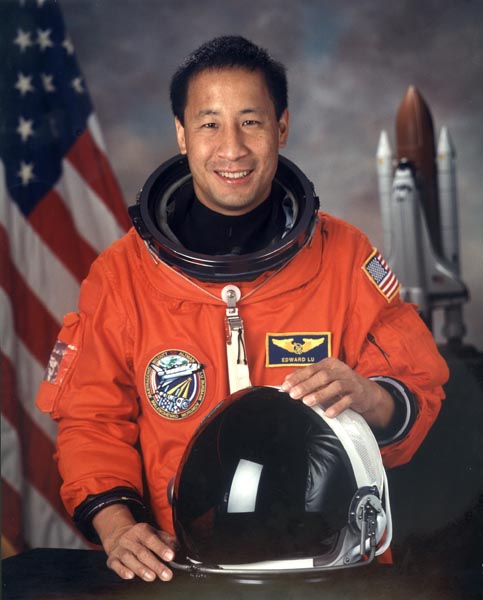Ed Lu
American - (NASA)
Retired
Date of Birth: July 1, 1963
Age: 62
Edward Tsang "Ed" Lu (simplified Chinese: 卢杰; traditional Chinese: 盧傑; pinyin: Lú Jié) is an American physicist and former NASA astronaut. He flew on two Space Shuttle flights, and made an extended stay aboard the International Space Station. In 2007, Lu retired from NASA to become the program manager of Google's Advanced Projects Team. In 2002, while still at NASA, Lu co-founded the B612 Foundation, dedicated to protecting the Earth from asteroid strikes, later serving as its chairman. As of 2014, he is currently its chief executive officer (CEO).
Space Shuttle Columbia / OV-102 | STS-84
National Aeronautics and Space Administration | United States of AmericaKennedy Space Center, FL, USA
May 15, 1997, 8:07 a.m.
Space Shuttle Atlantis / OV-104 | STS-106
National Aeronautics and Space Administration | United States of AmericaKennedy Space Center, FL, USA
Sept. 8, 2000, 12:45 p.m.
Soyuz-FG | Soyuz TMA-2
Progress Rocket Space Center | RussiaBaikonur Cosmodrome, Republic of Kazakhstan
April 26, 2003, 3:53 a.m.
Status: Success
Mission:
Soyuz TMA-2 begins Expedition 7 by carrying 2 astronauts and cosmonauts to the International Space Station. Russian Commander, cosmonaut Yuri Malenchenko alongside Flight Engineer, Edward Tsang Lu (NASA) will launch aboard the Soyuz spacecraft from the Baikonur Cosmodrome in Kazakhstan and then rendezvous with the station. It landed on October 28, 2003, 02:40:20 UTC
Low Earth OrbitThe National Aeronautics and Space Administration is an independent agency of the executive branch of the United States federal government responsible for the civilian space program, as well as aeronautics and aerospace research. NASA have many launch facilities but most are inactive. The most commonly used pad will be LC-39B at Kennedy Space Center in Florida.
Falcon 9
CSG-3
Space Launch Complex 4E - Vandenberg SFB, CA, USACSG-3 is an Earth observation satellite for the Italian Space Agency, part of a reconnaissance constellation using synthetic aperture radars operatin…
Long March 7A
Shijian 29 A-B
201 - Wenchang Space Launch Site, People's Republic of China2 satellites officially described as for "demonstration of new technologies for spatial targets detection" purposes.
Long March 4B
Tianhui 7
Launch Area 94 (SLS-2 / 603) - Jiuquan Satellite Launch Center, People's Republic of ChinaA satellite officially described as for cartography purposes, details TBD.
Soyuz 2.1b/Fregat-M
AIST-2T 01 & 02
Cosmodrome Site 1S - Vostochny Cosmodrome, Siberia, Russian FederationA pair of Russian optical Earth observation satellites built by the Progress Rocket Space Centre for obtaining stereo images of the Earth's surface, …
Long March 3B/E
Fengyun-4C
Launch Complex 2 (LC-2) - Xichang Satellite Launch Center, People's Republic of ChinaChina's geostationary meteorological satellite program FY-4 (Feng Yun 4) is the second generation of chinese geostationary meteorological satellites.




